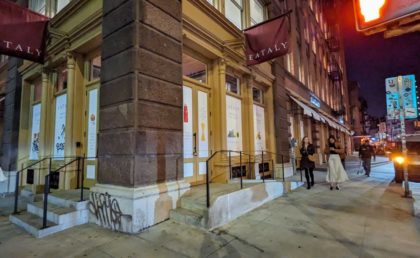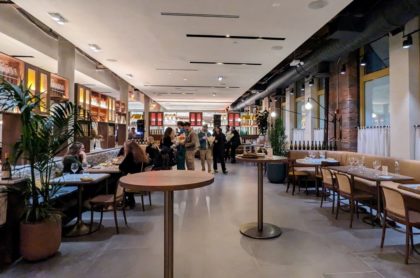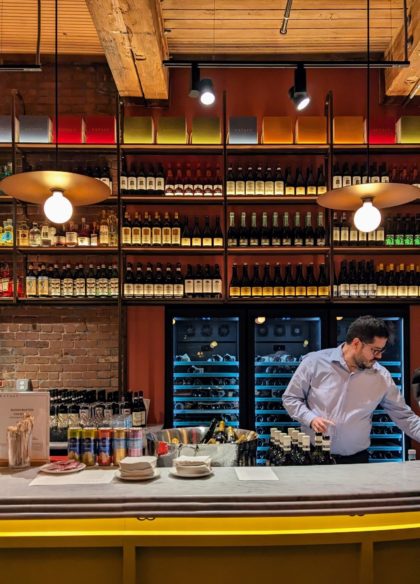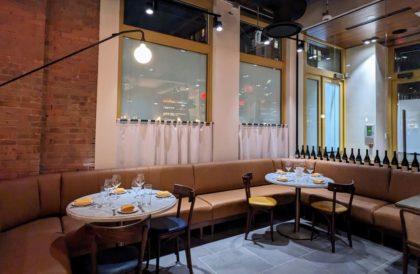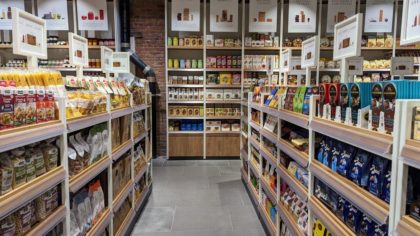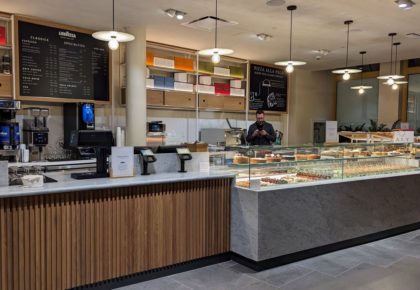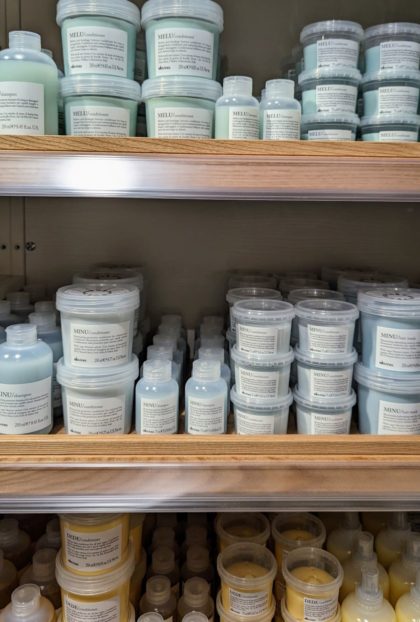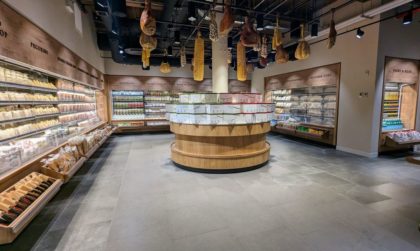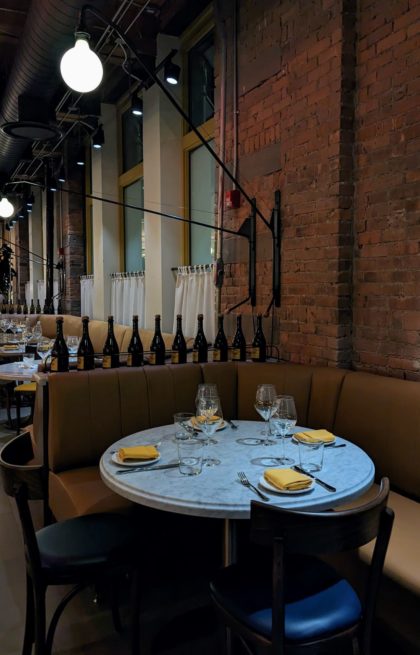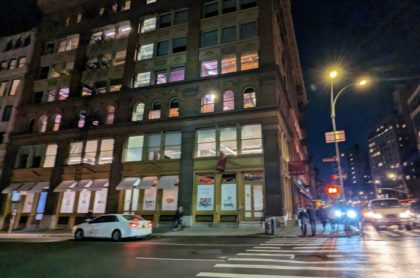Categories
Left column house ads
Sneak Peek: Eataly Soho
November 17, 2023 Restaurant/Bar News, Shopping
The press folks for Eataly were good to put me on the list for the preview last night: it opens officially on Saturday, Nov. 25, in early December at noon and I bet it will be a scene. It’s a great corner spot at 200 Lafayette, the southwest corner with Broome — easy access to east Tribeca — with beautiful features inside and out, not just the cast iron but also the exposed brick and steel swinging wall lamps. (The building is not landmarked, but it is in the Soho-Cast Iron District Extension, and it’s a beauty. I pasted in a bit from the designation report below.)
The space is 18,000 square feet with entrances on the corner that open into the restaurant and bar and, as you head north through the space, the cafe. The menu will be handmade pastas, seafood and what they call premium meats, such as the new Fornello Pugliese, a skewer served with sides. The cafe is designed to be an Italian all-day coffee bar experience, with Eataly’s Roman-style (square) pizza alla pala, pastries, paninis, vegan croissants. The liquor license covers both spaces.
The market then winds down and around from there — it will take another visit (or three) for me to get what’s where, but that’s sort of how Eatalies work. There will be over 200 “salumi e formaggi,” 100 extra virgin olive oils, 200 shapes of pasta (both fresh and artisanal), sweets, a selection of meat cuts and seafood, and seasonal produce. There’s also a huge display of gift boxes and panettoni downstairs, as well as some holiday gifts; that smaller space will no doubt rotate.
Eataly now has 47 stores in 16 countries, and is planning an even bigger global empire. The first store was Torino, in 2007; Flatiron opened in 2010 and the WTC mall in 2016. It was founded in 2003 by Oscar Farinetti and is still headquartered in Italy, in Monticello D’Alba.
From the Soho Cast-Iron Historic District Extension designation report: “This seven-story, neo-Classical style store and loft building was designed by architect Max Epstein and built in 1911-12 for the American Express Co. at a time when many of SoHo’s remaining small houses, most of which had been converted to industrial use years earlier, were being replaced by larger new loft buildings. This building replaced several brick, early nineteenth-century buildings.
“Beside American Express, which occupied a portion of the building and leased space in the remainder, the building was occupied by a variety of tenants, including United Brush Manufactories (1912-16); Bertold Holtenhof Electrical Equipment Co. (1923); the Acme Printing Ink Co. (1941); Dunn & Flynn, brass products (1956); and the Hirsh Gallery (1999). The building, which has been converted to condominiums on the upper stories, is evocative of the SoHo area’s prominence as one of New York City’s prime business districts in the early-twentieth century and its continued importance through the years as the location of small factories and warehouses, and later, of galleries and luxury apartments.”
Comment:
Subscribe
Subscribe to the TC Newsletter







